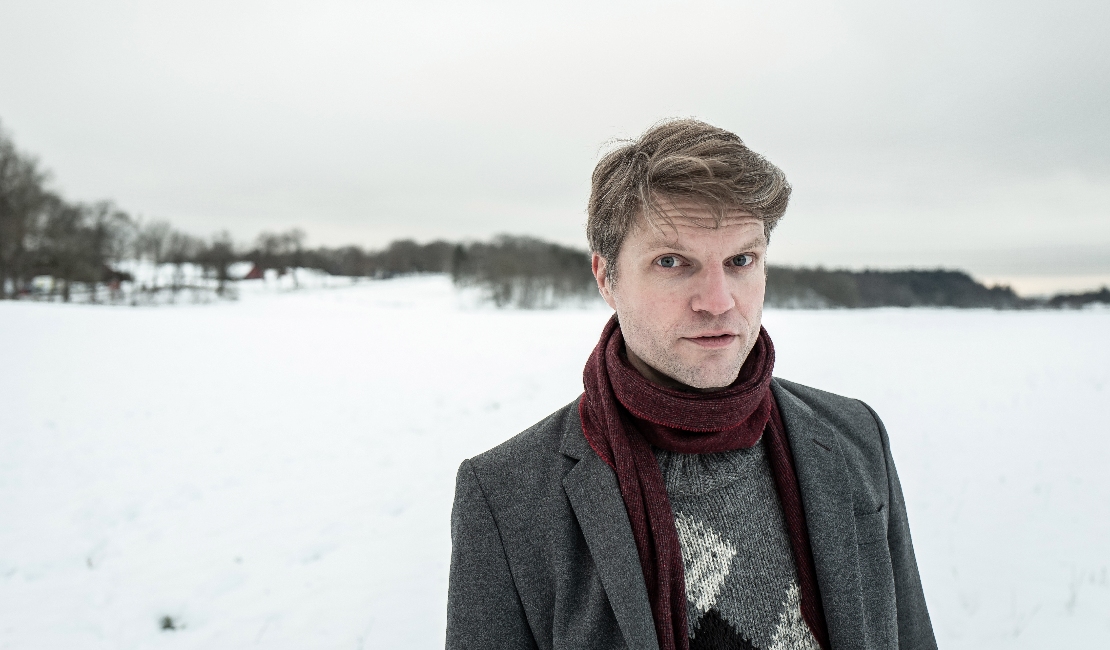The Investigating Composer: 50 years of Buene

In 2023, we celebrate the 50th birthday of Norwegian composer/writer Eivind Buene. Buene’s music has been performed at prestigious venues, including Carnegie Hall and Berlin Philharmonie. He has received commissions from Ensemble Intercontemporain, Birmingham Contemporary Music Group, Klangforum Wien, and a number of Scandinavian orchestras and ensembles. 25 years ago, Buene was among the Norwegian pioneers of the artistic movement called “Retromodernism.” “Retromodernism” focuses on how the past is used to shape the present, a focus that is a cornerstone in Eivind Buene’s composing.
Schubert Lounge for a singer and a large ensemble, commissioned by the Oslo Sinfonietta, shows how history and traditions come into play in Buene’s works. Here, Buene explores how Schubert’s lieder might have sounded if composed by a 1970s singer-songwriter:
“The work gave an opportunity to work with some things that interest me most as a composer: The friction between different aesthetics, different musics, and between different systems of thought. In Schubert Lounge, there are three strands of music that meet: My recontextualized versions of Schubert, performed with an amateur’s voice and a Fender Rhodes; Halvor’s interpretation of my music written for his voice, based on fragments from Schubert’s diary, and Tora’s very personal renderings of Schubert-songs.”
Seeing Schubert through the perspective of a 1970s singer-songwriter shifts our idea of Schubert along with our idea of the singer-songwriter. The audience experiences a new sense of musical society in the late 1800s and reminds us of the specificity of our time and place in history.
The mystery of what Schubert’s voice sounded like is also at the core of Schubert Singt II for chorus and turntable, commissioned by The Norwegian Soloist’s Choir. Text fragments of Schubert’s diary are sung by the chorus while a fragmented accompanying piano part is played on a turntable. While evoking Schubert’s voice in a metaphorical sense, Schubert Singt II also portrays how the listening situation has changed with the advancement of recording technology.
"Uncovering" the Orchestra
The symphony orchestra as an institution has over 250 years of history, traditions, and repertoire. Composing music for such a powerhouse can be a daunting task. As Buene puts it:
“For a contemporary composer, writing for the symphony orchestra is not unlike arriving very late at a party. Even though the host greets you heartily, the dance floor is emptying, and people slump around, content to their hearts' desire.”
The histories surrounding the symphony orchestra and the repertoire it plays have been spun through three centuries, and the concert-goers revel in the already-known melodies, harmonies, and rhythms of 200-year-old composers. Buene brings a mirror to the concertgoer and orchestra, challenging both the institution of the orchestra and the audience. In the orchestral work A Posthuman Guide to the Orchestra, commissioned by the Oslo Philharmonic Orchestra, the computer-generated AI voice of “Siri” explains the concert and the practices of the music and orchestra to the audience as it unfolds.

© Lars Skaaning
The Investigating Composer
Buene approaches the orchestra as an investigating archaeologist. He thinks of the orchestra as an archive of how emotions have been expressed and portrayed. Buene sifts through this archive, finding something that resonates inside him, and this becomes the cornerstone of new works.
In the work Langsam und Schmachtend, commissioned by the Norwegian Chamber Orchestra, Buene meditates on the first minute of music in Wagner’s Tristan und Isolde. The title refers to the tempo indication of Tristan und Isolde and is in the composer’s own words “an attempt to write slow music.” Buene is working from the rising and falling lines and movements and the frictions between melodic and harmonic surfaces found in Wagner’s Vorspiel. From this core, the work unfolds independently from the ‘source material.’
Violin Concerto, written for soloist Peter Herresthal, is an example of the historical layers Buene reflects upon. While working on the concerto, he felt a strong connection to Alban Berg’s “Violin Concerto” from 1935, which itself is based on a melody adopted from JS Bach’s chorale “Es ist Genug”:
“When I work with the orchestra, a dialogue with the past often arises. I believe this is due to the rich history of the symphonic orchestra and the loaded atmosphere of the concert halls[…] The violin concerto by Alban Berg is an example of how the past sings in us with a choir of voices. We live among them, they live among us, and this becomes evident when the orchestral music is brought to life from the silent pages of the score.”
Buene’s approach to the orchestra makes history work for him and invites us to reflect on how the present and the past are intertwined. Instead of yearning after a bygone era, Buene’s works helps to - in his own words - “shift away from a melancholic view of history towards notions that are useful in the artistic acts of actually making something – maybe even something new”.
Happy 50th birthday to Eivind Buene, and here’s hoping for many more musical investigations.
Enjoy more of Eivind Buene’s music on this playlist:
